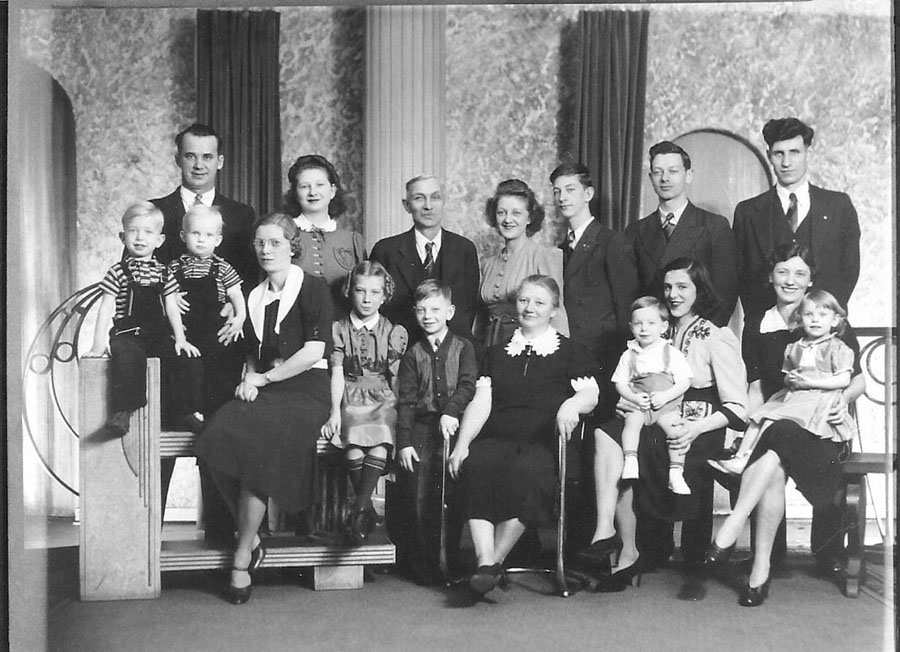The Batkes entered the Port of Québec on July 28, 1912. The receiving station for the Port of Québec was Grosse Île at the time. An excerpt about Grosse Île follows:
"The quarantine station on Grosse Île, an island located in the middle of the St. Lawrence river, 48 km downstream from Québec, was established by colonial authorities in 1832, in response to reports that new immigrants had various contagious diseases. With cholera outbreaks in 1832 and 1834, and a deadly typhus epidemic in 1847-1848, thousands of new immigrants were quarantined on the island, with thousands eventually perishing. The victims of the latter epidemic were mainly Irish immigrants fleeing the potato famine. This period of virulent epidemics came to an end only after another outbreak of cholera in 1854.
"At the time of Confederation in 1867, the Canadian government formulated a comprehensive policy on immigration and settlement, requiring the establishment of a reliable, efficient quarantine station. Dr. Frederick Montizambert was in charge of establishing modern facilities at the Grosse Île quarantine station, where he acted as medical superintendent from 1869 to 1899. As fewer people immigrated to Canada as a result of the First World War (1914-1918) and the Great Depression (1930s), and knowledge of microbiology and the treatment of contagious diseases was advanced, the hospital on Grosse Île was reduced to treating minor childhood infections such as diphtheria, chicken pox and measles. New international health agreements stated that people infected with these diseases no longer had to be quarantined and serious infections such as cholera, typhus and smallpox could be successfully treated at the Parc Savard Hospital in Quebec, founded in 1907. The quarantine station on Grosse Île was closed in 1937."
Quarantine And Public Health: The Changing Role of Grosse Île, by André Sévigny, Historian, September 1995.
Information includes stories, images and comments about the Henry Batke/Katherine Reck family from Russia. Also included in this Blog are their close neighbors, Jacob Link/Maria Philips, also from Russia. These two families homesteaded in Saskatchewan then traveled to Alabama and eventually to St. Joseph, Michigan together. Please share your stories and memories about these two amazing immigrant families.
The Extended Batke Family with Link neighbors

Pictured in the photo: (Back row, standing, left to right) Herman Fredrick, Anna Batke, Henry Batke, Sr., Selma Batke, Henry Robert Batke, William Batke and Arthur Engler. (Front row/sitting, left to right) Donald Fredrick, Robert Fredrick, Katherine Batke Fredrick, Ruth Batke, Edwin Batke, Katherine Reck Batke, Jerald Batke, Edna Kwiatkowski Batke, Mary Batke Engler and Elaine Engler. Taken c1940, possibly to celebrate Henry and Katherine’s 30th wedding anniversary, October 22, 1940. Photo courtesy: Don Fredrick.
About Henry Batke and Katherine Reck
Heinrich Batke, the son of Martin Batke (c1848-b1912) and Anna Lock (1848-1939) was born in Chortitza, Russia on September 7, 1877. Also in Russia, Catharina Reck was born on October 14, 1890. Her parents were John Reck and Renata Shirk. Henry and Katherine married in Russia on September 22, 1910. On July 13, 1912, Henry, his wife and seven month old daughter, Katherine, sailed from the Port of Bremen, Germany on the ship Pallanza. They traveled to Quebec City, Canada arriving on July 28, 1912. They immediately left on a special Canadian Pacific Railroad train to Saskatchewan, Canada. The Batkes homesteaded in Lydiard, Moose Jaw, Saskatchewan between 1913 and 1918. On October 3, 1917 Henry Batke became a citizen of Canada. Due to England's sovereignty over Canada, he became a British citizen. Finding farming in Canada difficult, on December 7, 1921 the Batke family, now also including Mary, William and Selma, left for Yellow Pine, Alabama. After the birth of Anna and much hardship in Alabama, the family moved to St. Joseph, Michigan where children Henry, Ruth and Edwin were born. Henry, a furniture maker in Russia, became a machine operator at the 1900 Corporation, a fore-runner of Whirlpool, in St. Joseph. After Henry's death on April 7, 1949, Katherine Reck Batke married Gustav Schmeichel in 1959. Katherine Reck Batke Schmeichel died at the Claremont Nursing Home in Benton, Michigan on October 28, 1979.
No comments:
Post a Comment